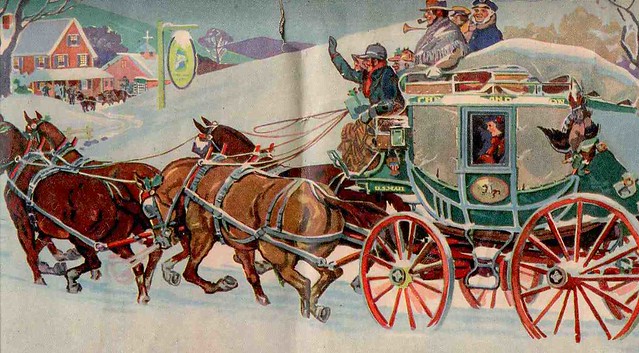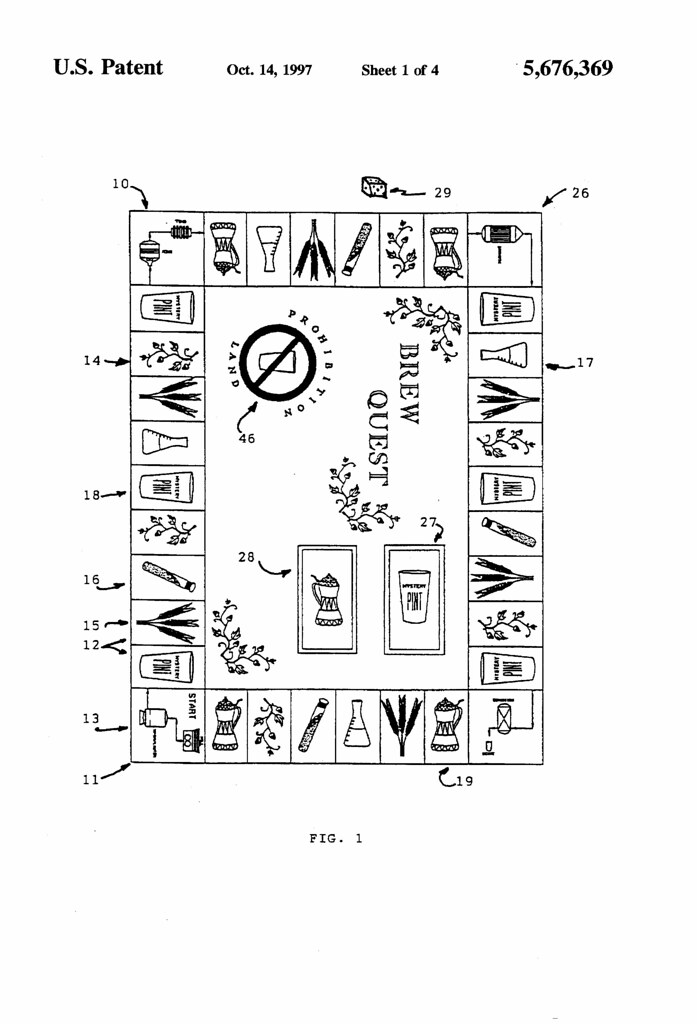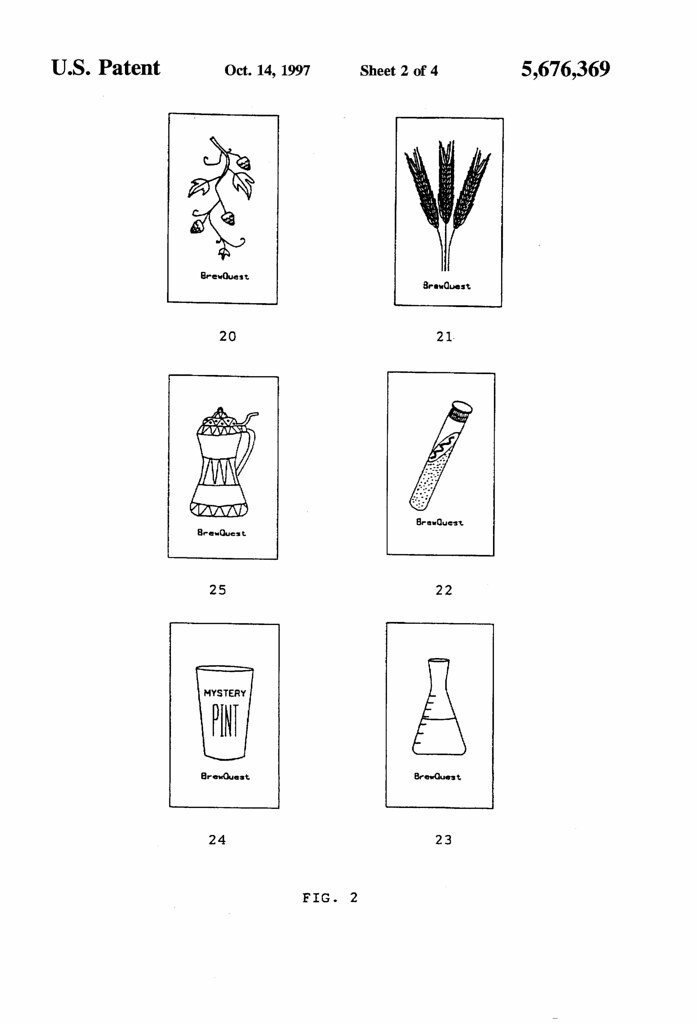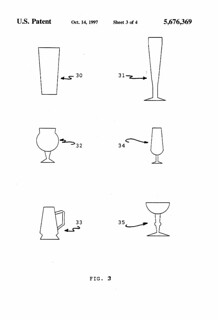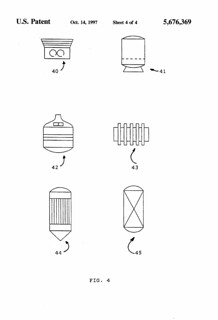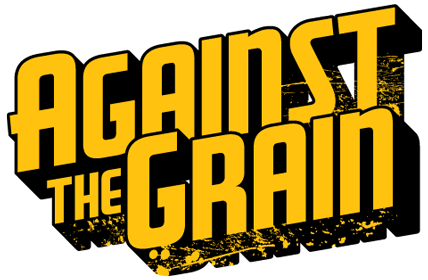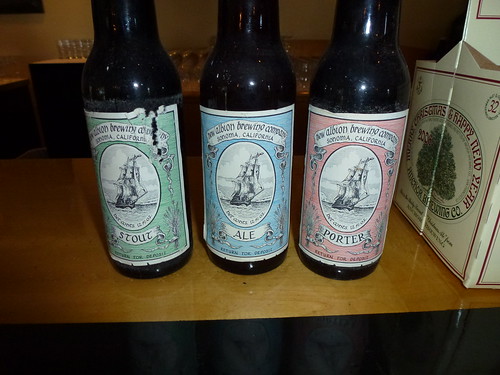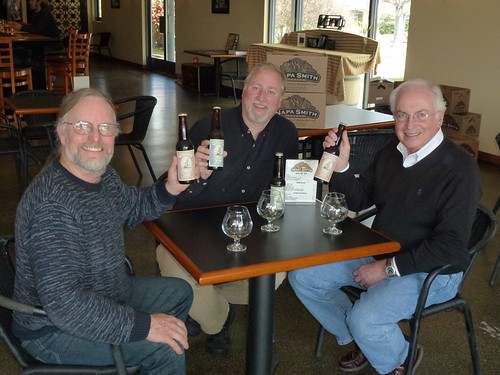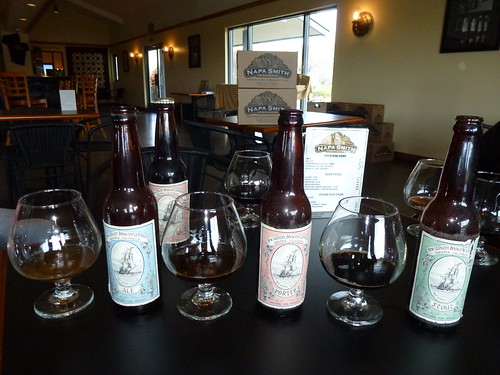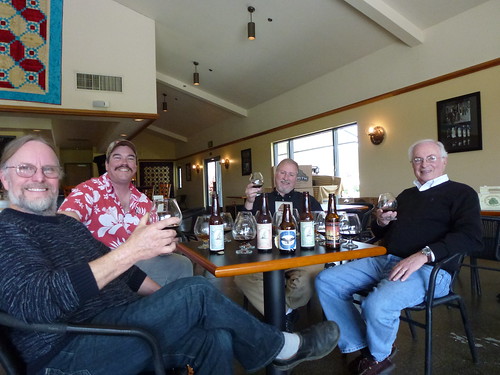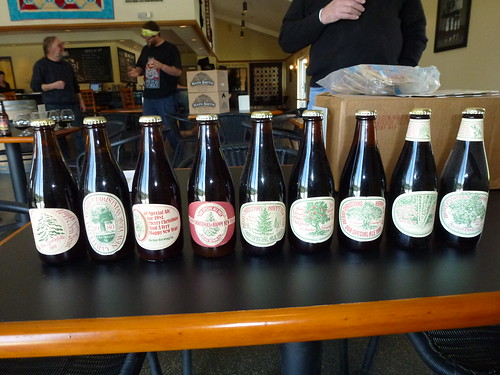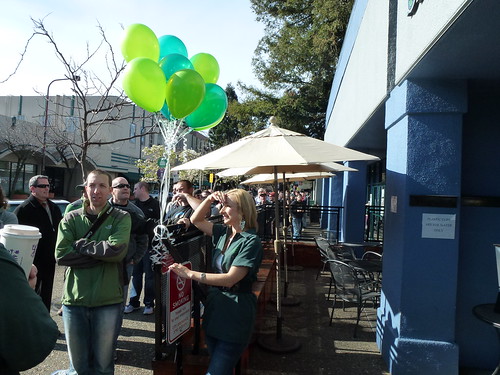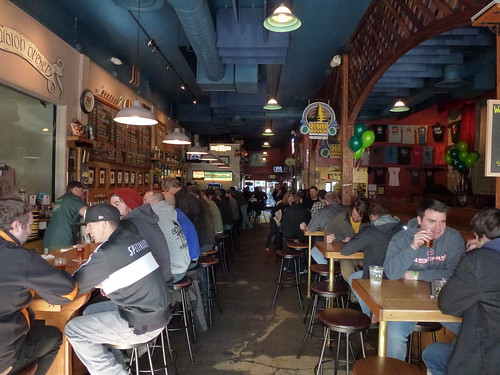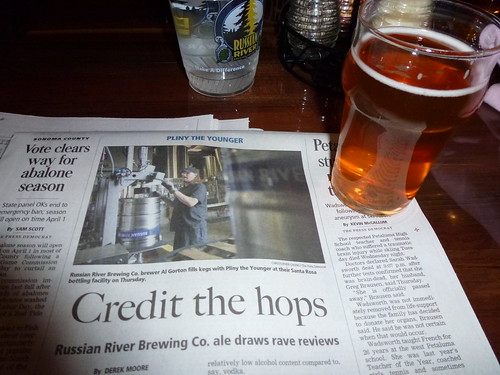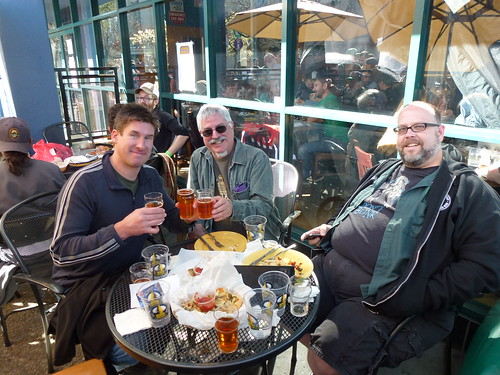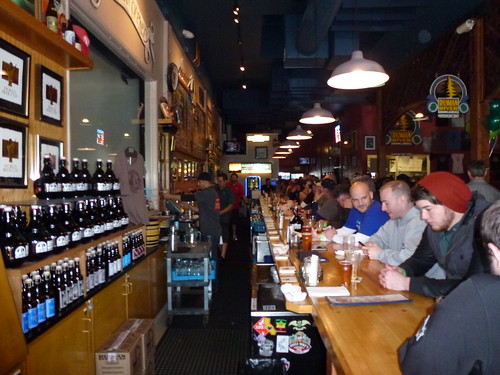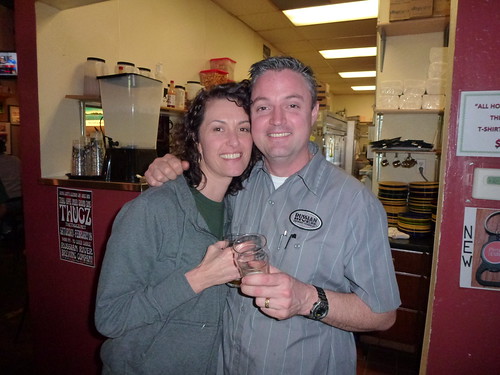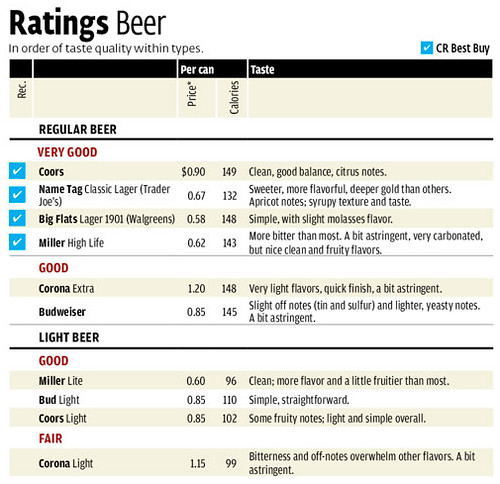
Today in 1992, US Patent 5079927 A was issued, an invention of A. J. Rodino and James R. Kinkaide, for their “Beer Cooling Apparatus.” Here’s the Abstract:
A method and apparatus is provided for dispensing beer from a keg without excess foaming wherein the keg and beer temperatures and fluid pressures are controlled such that beer is dispensed at predetermined temperatures at substantially atmospheric pressures even over a wide range of atmospheric temperatures. Beer is supplied under pressure from the keg to a constricted flow line which abruptly decreases flow pressure. A portion of the constricted flow line is immersed in a refrigerating bath to reduce beer temperature. The length of the constricted flow line to the dispensing nozzle is sufficient long and its internal diameter sufficiently smooth that beer flow therethrough is stabilized to significantly reduce turbulence. Beer pressure drop through the nozzle is minimal and beer flow is relatively laminar.
The portion of the constricted line immersed in the refrigerating bath is formed from coiled tubing. The bath fluid is recirculated and the bath temperature is sufficiently low as to cause ice to form. The constricted line has a constant internal diameter throughout its length, and the dispensing nozzle has that same internal diameter. A portable embodiment includes a wheeled trailer for supporting and sheltering the keg.



